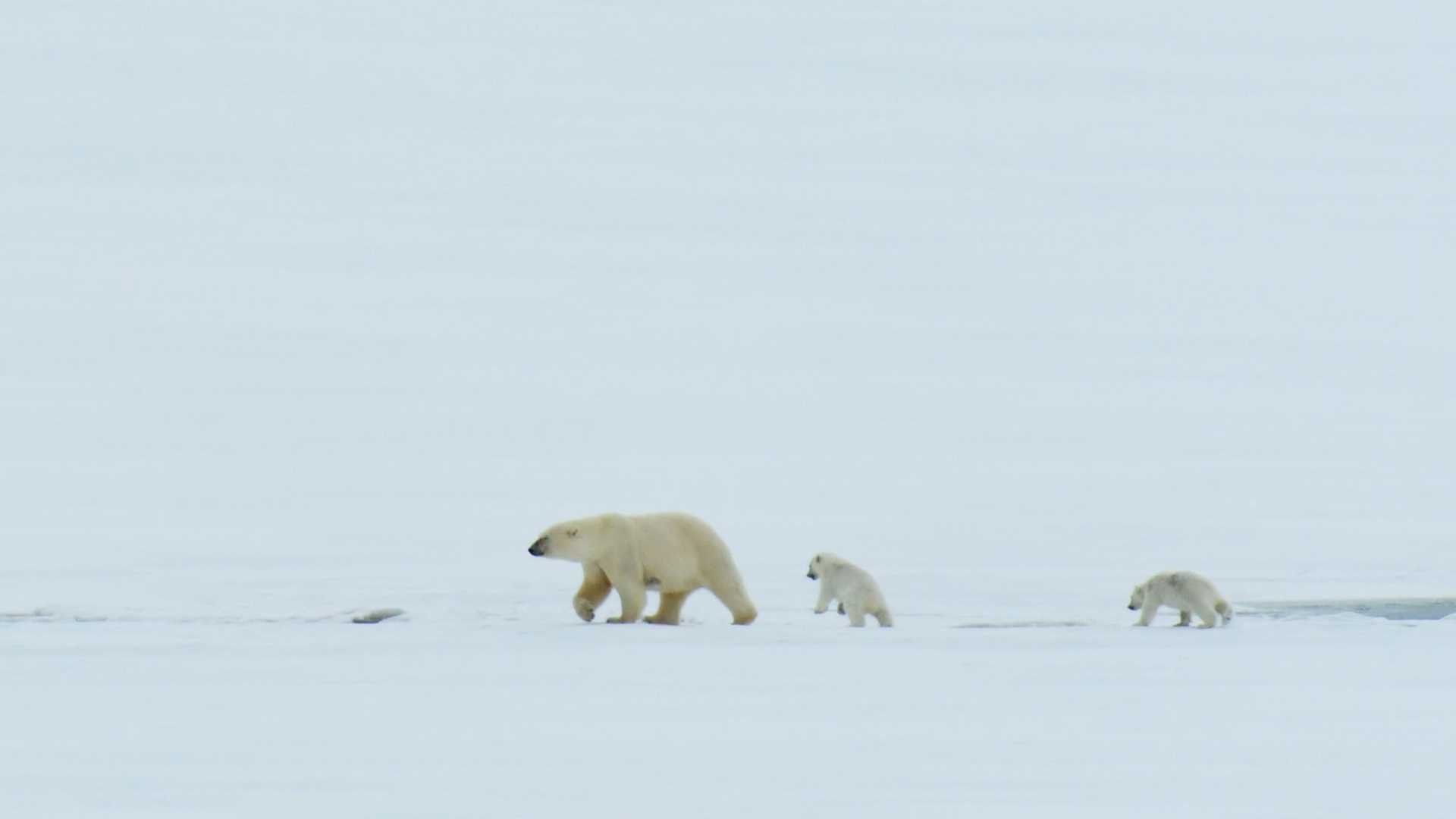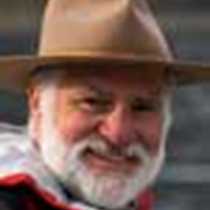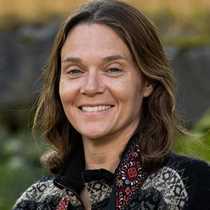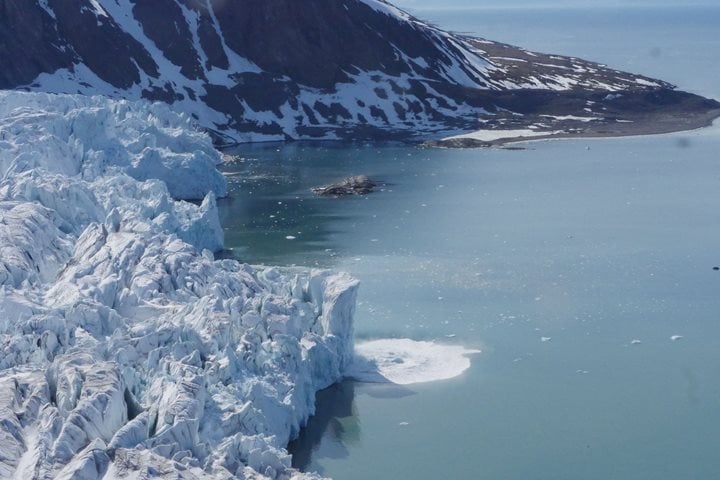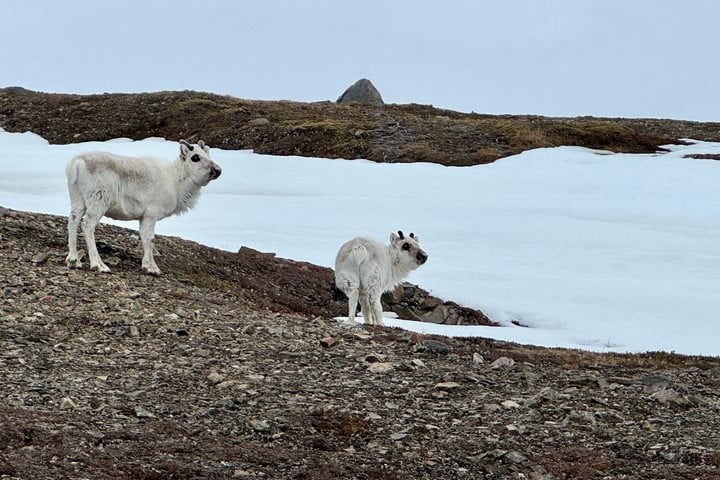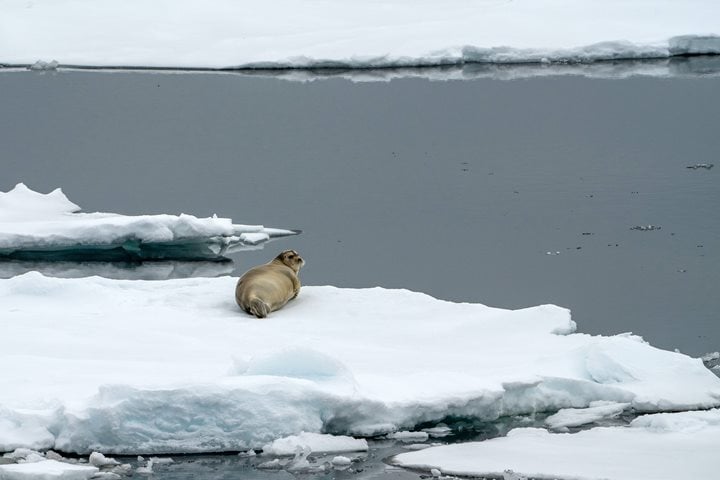During the early hours of the morning, the National Geographic Explorer quietly made her way into the scenic Sørgattet Passage between the main island of Spitsbergen and the island of Danskøya. Suddenly the chief officer shouted, “walrus ahead!” There, straight-ahead of the ship, the early risers could clearly see a walrus at the surface before it quietly dove. This was exciting and it continued the trend from the night before where we spent the early and late evening in the company of four blue whales, the largest animal that has ever lived on the planet.
We spotted the whales at the mouth of Isfjorden, the large fjord that leads to Longyearbyen, our point of departure. These giant cetaceans would have recently arrived from their wintering areas and will spend the summer up here gorging themselves on arctic krill. During the days of whaling, these animals were extensively hunted all over the planet for their blubber; it’s so welcome to be witnesses to their slow recovery. That first evening we happily tumbled into bed to get some well-earned rest after all our travels.
After leaving Sørgattet, we entered Smeerenburgfjorden and headed north with the islands of Danskøya and Amsterdamøya on our portside. We spotted a small huddle of walruses along the distant shoreline. We also learned about some of the early whalers who came up here in the 1600s. It was a dangerous profession and many died; this fjord was the final resting place of some 200 men. We saw a number of seabirds as we progressed to our afternoon destination. The bird that elicited the most excitement was the Atlantic puffin.
By lunch, we were in Woodfjorden and close to our planned afternoon destination, Mushamna, which included a visit to a large trappers cabin that was built from the driftwood found strewn along the beaches here. This driftwood mostly arrives due to oceanic currents in the Arctic Ocean from Northern Russia.
However, sometimes the best plans are spoiled. In this case, it was by the sighting of our first polar bears. In the next couple of hours, we saw two mothers, each with two cubs. One of the females led her year-old cubs in search of food and they delighted us as they continually played with each other. Along the way they found a puddle, spending a long time cavorting and generally having a lot of fun. We also saw one of the cubs stop and then pound a piece of ice repeatedly with its front paws; this behaviour is used by adult bears as they try to break the roof of snow concealing a seal under the ice. The other bear was a remarkable find, as it was poking its nose out of its wintering den up a snow-covered slope. Occasionally it would make itself more visible and, on several occasions, the newly-born cubs would make brief appearances.
In the late afternoon, after the ship had repositioned to a new landing at Sjøværnbukta, we went ashore to enjoy short, medium, and long photo-walks in the Arctic tundra. The landscapes around us were breathtaking. Along the way, lichens and mosses were spotted as well as many clumps of purple saxifrage in bloom. Some reindeer were spotted off in the distance, as well as a minke whale and arctic fox.
Shortly after returning to the ship, we headed to the lounge for the captain’s “Welcome Cocktails” and an opportunity to meet the senior officers who lead the different teams that serve us on the Explorer. Then, we were off to dinner, chatting about the momentous events of the last 24 hours.
As a nightcap, we were treated to some incredibly beautiful sights as the ship made a close approach along Monacobreen, an impressive glacier with a five-kilometer face. The glacier must have been very active, for all around us there were many icebergs as well as bergy-bits and also some recently frozen sea-ice. Just before leaving the fjord, we spotted a pure-white ivory gull with its black bill and legs. What a day it was!

